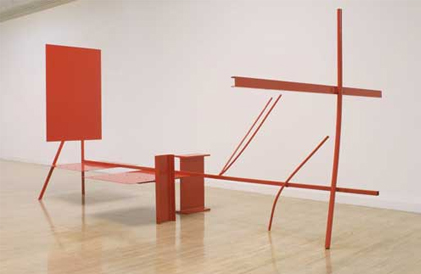Anthony Caro's return to sensual narrative at Knoedler and Annely Juda.
BRUCE MCLEAN attended St Martin's School of Art while Anthony Caro's influence was at its height, and later gave a damningly witty account of the attitudes to sculpture that he encountered there. It was the mid-1960s, and formalism had hit its stride; Caro and his colleagues on the teaching staff, McLean recalled, 'would avoid every broader issue, discussing for hours the position of one piece of metal in relation to another. Twelve adult men with pipes would walk for hours round a sculpture and mumble.' St Martin's, for a time anyway, became St Anthony's.
Anthony Caro is known as the man who brought the values of American formalist art criticism - embodied in the pronouncements of Clement Greenberg and his acolytes, broadcast in the pages of Artforum magazine - to British sculpture. Greenberg, simultaneously the most influential and most narrowly prescriptive critic of this century, argued that art should purge itself of subject matter. Pure art was abstract art: 'Content,' Greenberg wrote laconically, was 'something to be avoided like the plague.'
Caro met Greenberg in 1959 and took the critic's advice - 'If you want to change your art, change your habits' - immediately to heart. Having been a modeller of somewhat unprepossessing, lumpish nudes, Caro abandoned the traditional methods of the sculptor and became a welder and bolter and riveter of found scrap, sheet steel and girders and what-have-you. The Tate Gallery's Early One Morning, of 1962, is often cited as a prime example of Caro's uncompromising abstraction: an enigmatic arrangement of girders and sheets of steel, crossing and supporting one another, interlocking and abutting, gesturing in space but referring to nothing in particular.
All of which makes Caro's new work, currently on display both at Knoedler and...


